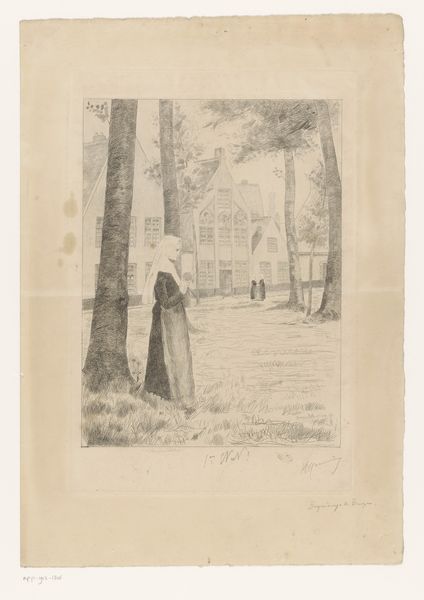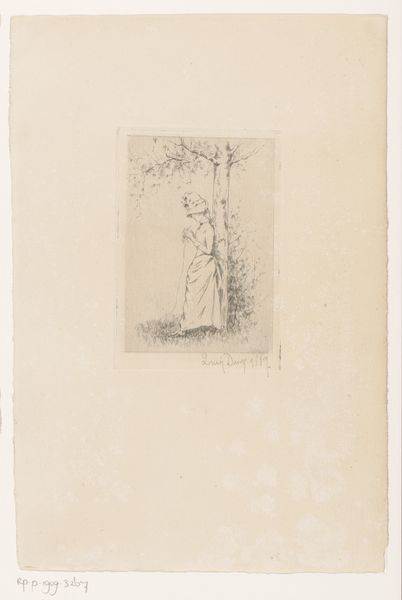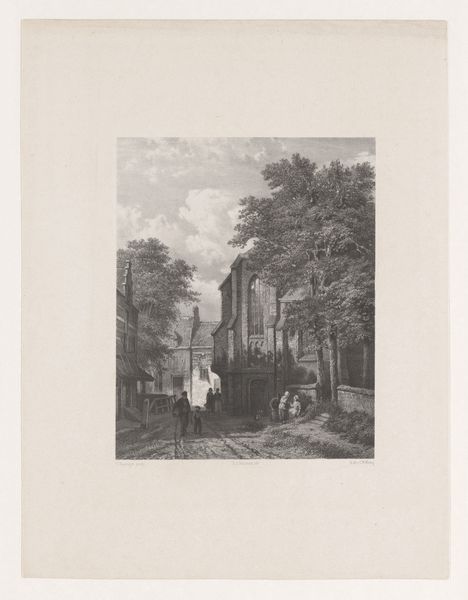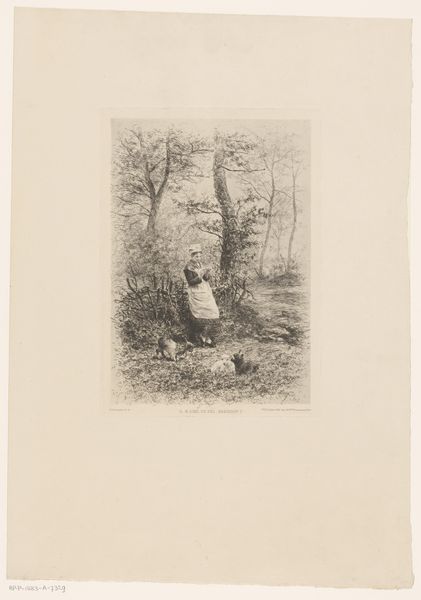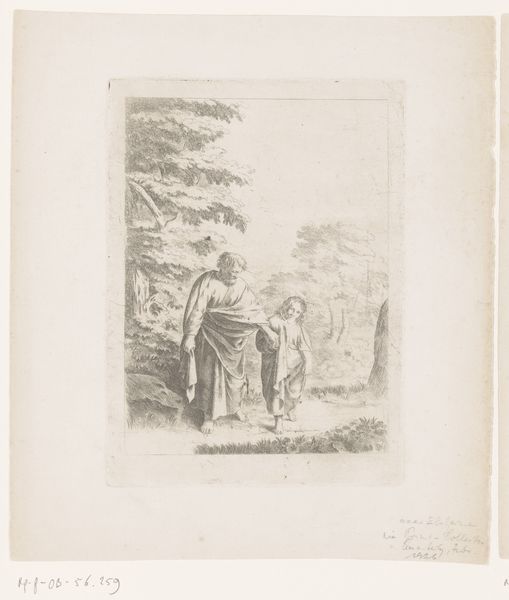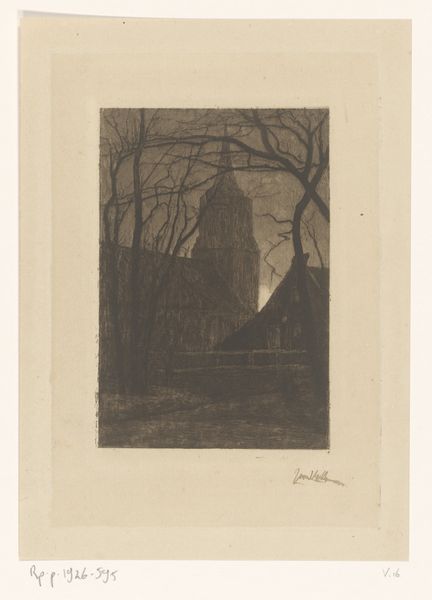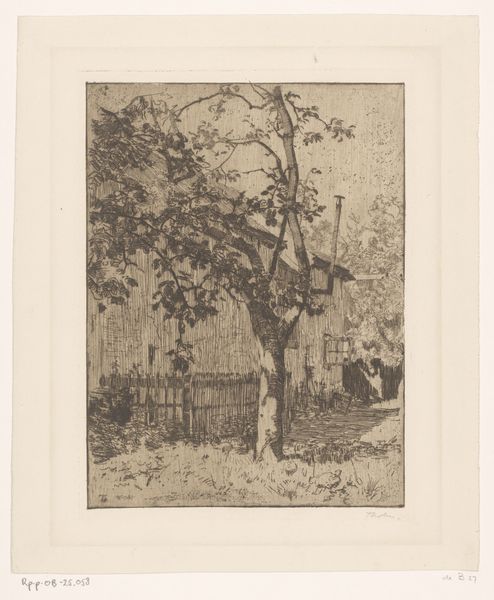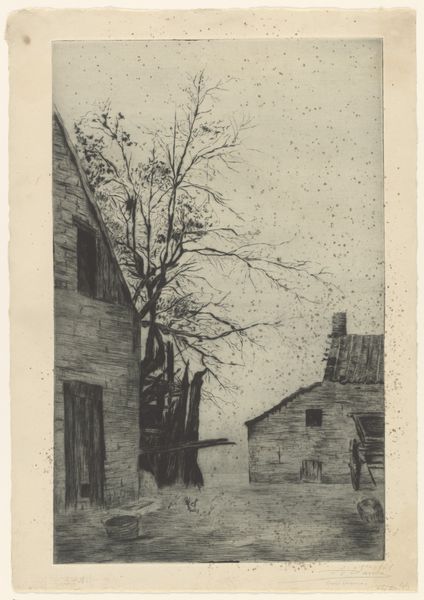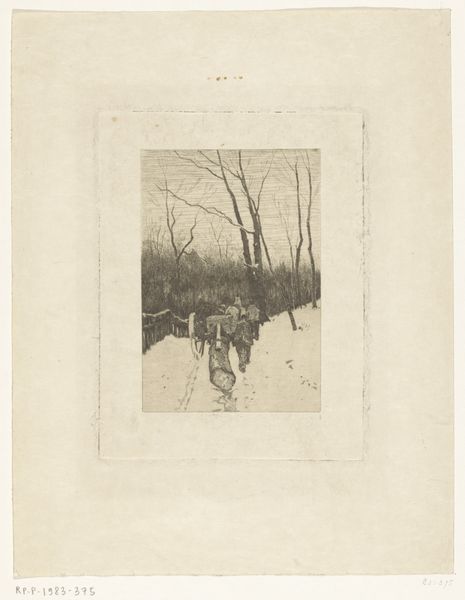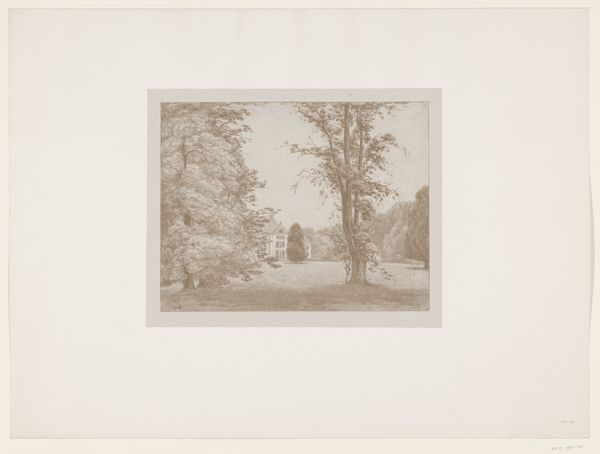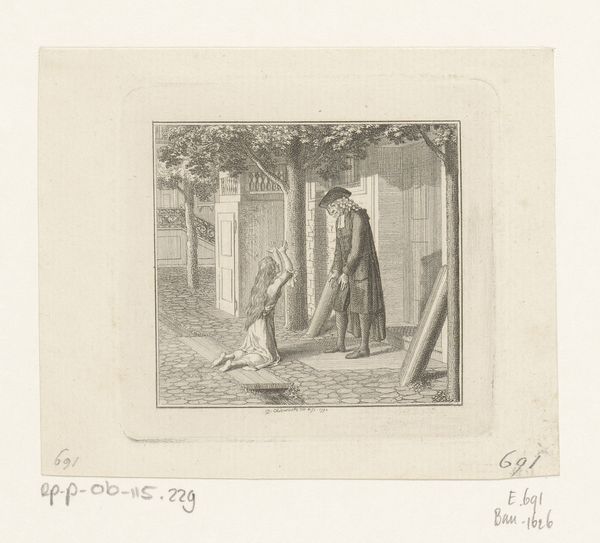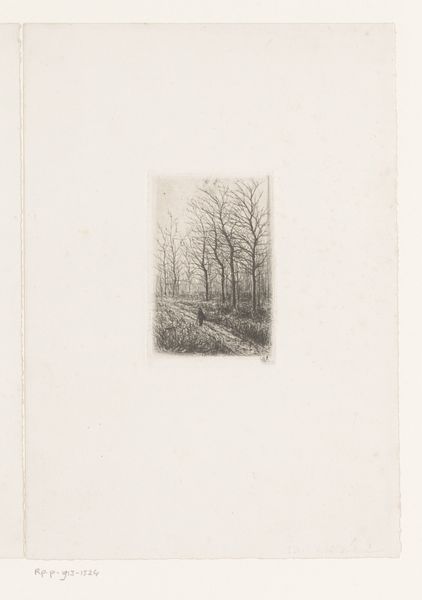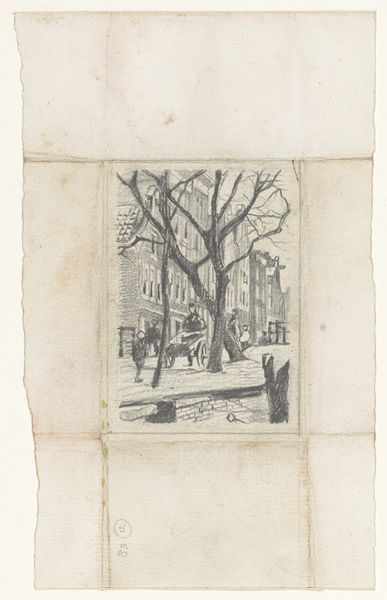
drawing, pencil
#
photo of handprinted image
#
drawing
#
shape in negative space
#
light pencil work
#
negative space
#
pale colours
#
pencil sketch
#
light coloured
#
landscape
#
white palette
#
pencil
#
symbolism
#
genre-painting
#
remaining negative space
#
soft colour palette
#
realism
Dimensions: height 340 mm, width 230 mm
Copyright: Rijks Museum: Open Domain
Curator: Here we have Karl Meunier's 1888 pencil drawing, "Non met breinaalden in de hand op het Begijnhof te Brugge," which translates to "Nun with Knitting Needles in Hand at the Beguinage in Bruges." Editor: It strikes me as both peaceful and subtly unsettling. The light is beautiful, almost dreamlike, but the almost ghostly figure gives me pause. What kind of paper did Meunier use? Curator: That soft, diffuse light certainly invites contemplation. Considering that the Beguinage at Bruges was a community for women who lived religiously but didn't take vows, the knitting needles likely signify both industriousness and humility. Editor: Humble materials and process, too. Pencil drawings weren't exactly prized in the late 19th century like painting. It speaks volumes that Meunier chose such a modest method for depicting a place dedicated to unassuming lives. What paper? Is it handmade, or industrially produced? Curator: The precise paper stock would need closer analysis, but consider how negative space plays a role. It almost feels as if the scene emerges from a spiritual ether. Bruges itself carries such potent symbolic weight – its canals, its history. Editor: But there’s a tension in using pencil, a sketching medium. Was this meant to be a study, something preparatory? Or is this the finished artwork? That would change my understanding of the labor invested, the intended audience, and the artist's view of craft itself. The subtle soft colors reinforce my ideas around "humble materiality" here. Curator: Interesting observation. Its unfinished quality almost reinforces the idea of a life in progress, a journey of faith. The nun could even represent a state of continual becoming, which adds a layer of symbolism. Editor: I'm still caught up by this focus on ordinary objects: the needles and yarn against this almost sacred backdrop. The repetitive action of knitting underscores labor, production, perhaps challenging conventional class distinctions within art itself. I would also consider more about the place: why the Begijnhof? Curator: That's exactly what intrigues me. Meunier juxtaposes the everyday, represented by her labor, with a sacred space. It seems like he's suggesting spirituality is not detached from everyday work. I find this composition speaks to the sacredness found within ordinary activities. Editor: I agree. Thinking about materials makes me aware of the wider social context too; the means and sites of artistic and manual production that would have existed in Bruges during this period and what that means in this particular picture. Curator: Indeed, analyzing this artwork unveils a conversation on symbolism and a reflection on the convergence of the ordinary and divine within the everyday practices of those women at the Beguinage in Bruges. Editor: It pushes you to consider, how much value do we put in the process versus in the finished, framed piece? In this case, those pencil lines suggest this is up for debate.
Comments
No comments
Be the first to comment and join the conversation on the ultimate creative platform.
